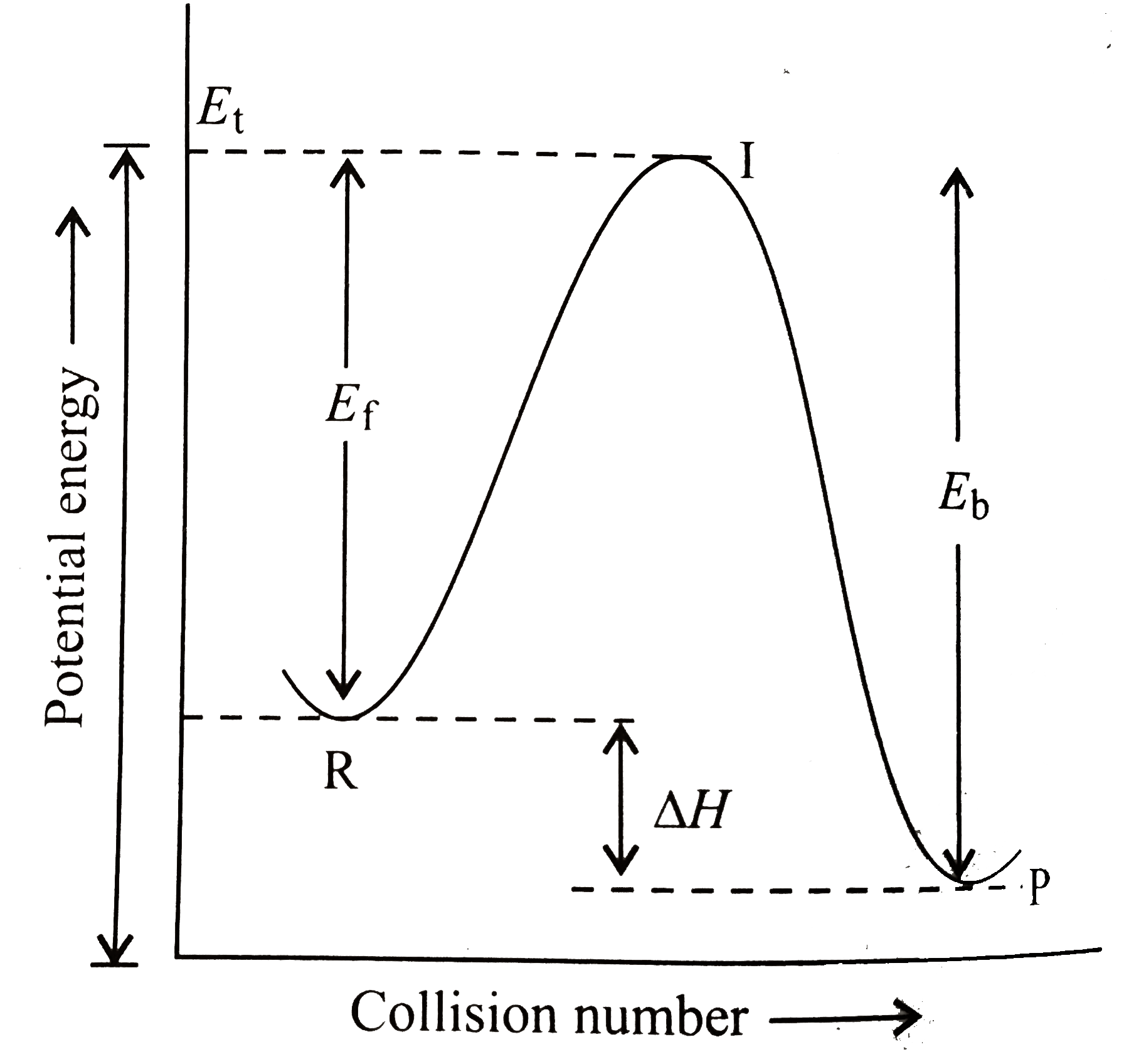The activation energies of the forward and backward reactions in the case of a chemical reaction are 37.5 and 51.3 kJ/mole respectively The reaction is
Endothermic
Exothermic
Neither exothermic nor endothermic
Independent of temperature
The correct Answer is:B
To determine whether the reaction is exothermic or endothermic based on the given activation energies, we can follow these steps:
Step 1: Identify the Activation Energies
- Activation Energy of Forward Reaction (Ea, forward) = 37.5 kJ/mol
- Activation Energy of Backward Reaction (Ea, backward) = 51.3 kJ/mol
Step 2: Calculate the Change in Enthalpy (ΔH)
The change in enthalpy (ΔH) for the reaction can be calculated using the formula:
ΔH=Ea (backward)−Ea (forward)
Substituting the values:
ΔH=51.3kJ/mol−37.5kJ/mol
Step 3: Perform the Calculation
Now, calculate the value:
ΔH=51.3−37.5=13.8kJ/mol
Step 4: Determine the Nature of the Reaction
Since the value of ΔH is positive (13.8 kJ/mol), this indicates that the reaction absorbs energy. Therefore, the reaction is endothermic.
Conclusion
The reaction is endothermic.
---
- Activation Energy of Forward Reaction (Ea, forward) = 37.5 kJ/mol
- Activation Energy of Backward Reaction (Ea, backward) = 51.3 kJ/mol
The change in enthalpy (ΔH) for the reaction can be calculated using the formula:
ΔH=Ea (backward)−Ea (forward)
Substituting the values:
ΔH=51.3kJ/mol−37.5kJ/mol
Now, calculate the value:
ΔH=51.3−37.5=13.8kJ/mol
Since the value of ΔH is positive (13.8 kJ/mol), this indicates that the reaction absorbs energy. Therefore, the reaction is endothermic.
The reaction is endothermic.
Topper's Solved these Questions
- MOCK_TEST_17BOOK - AAKASH INSTITUTECHAPTER - MOCK_TEST_17EXERCISE - Example
22 Videos
- ORGANIC CHEMISTRY : SOME BASIC PRINCIPLES AND TECHNIQUES BOOK - AAKASH INSTITUTECHAPTER - ORGANIC CHEMISTRY : SOME BASIC PRINCIPLES AND TECHNIQUES EXERCISE - Assignment(Section-D)(Assertion - Reason Type Questions)
12 Videos
Similar Questions
The activation energies of the forward and backward reactions in the case of a chemical reaction are 30.5 and 45.4kJ/mol respectively. The reaction is:
View SolutionIf the activation energies of the forward and backward reactions of a reversible reaction are Ea(f) and Ea(b), respectively. The ΔE of the reaction is ………..
View Solution
Knowledge Check
The activation energies of the forward and backward reactions in the case of a chemical reaction are 30.5 and 45.5 KJ/mol , respectively . The reaction is:
AexothermicBendothermicCneither exothermicDindependent of temperatureThe activation energies of the forward and reverse reaction in the case of a chemical reaction are 30.5 and 45.4kJ/mol respectively. The reaction is:
AExothermicBEndothermicCNeither exothermic nor endothermicDIndependent of temperatureA colliison between reactant molecules must occur with a certain minimum energy before it is effective in yielding Product molecules. This minimum energy is called activation energy Ea Large the value of activation energy, smaller the value of rate constant k. Larger is the value of activation energy, greater is the effect of temperature rise on rate constant k.

Ef= Activation energy of forward reaction
Eb= Activation energy of backward reaction
ΔH=Ef−Eb
Ef= threshold energy
The activation eneries for forward and backward reactions in a chemical reaction are 30.5 and 45.4kJmol−1 respectively. The reaction isAExothermicBEndothermicCNeither exothermic nor endothermicDIndependent of temperature
In a hypothetical reaction X→Y, the activation energies of the forward and backward reactions are 13 kj/mole and 7 kj/mole, respectively. Calculate heat of the reaction.
View SolutionThe activation energies for forward and backward reactions in a chemical reaction are 30.5 and 45.4 kJ mol−1 respectively. The reaction is
View SolutionWhen the activation energies of the forward and backward reactions are equal, then :
View SolutionFor a hypothetic reaction A→B, the activation energies for forward and backward reactions are 19 kJ/mole and 9 kJ/mole respectively. The heat of reaction is
View SolutionIn a hypothetical reaction A→B the activation energies for the forward and backward reactions are 15 and 9kJ/mol respectively. The potential energy of A is 10kJ/mol, then
View Solution
